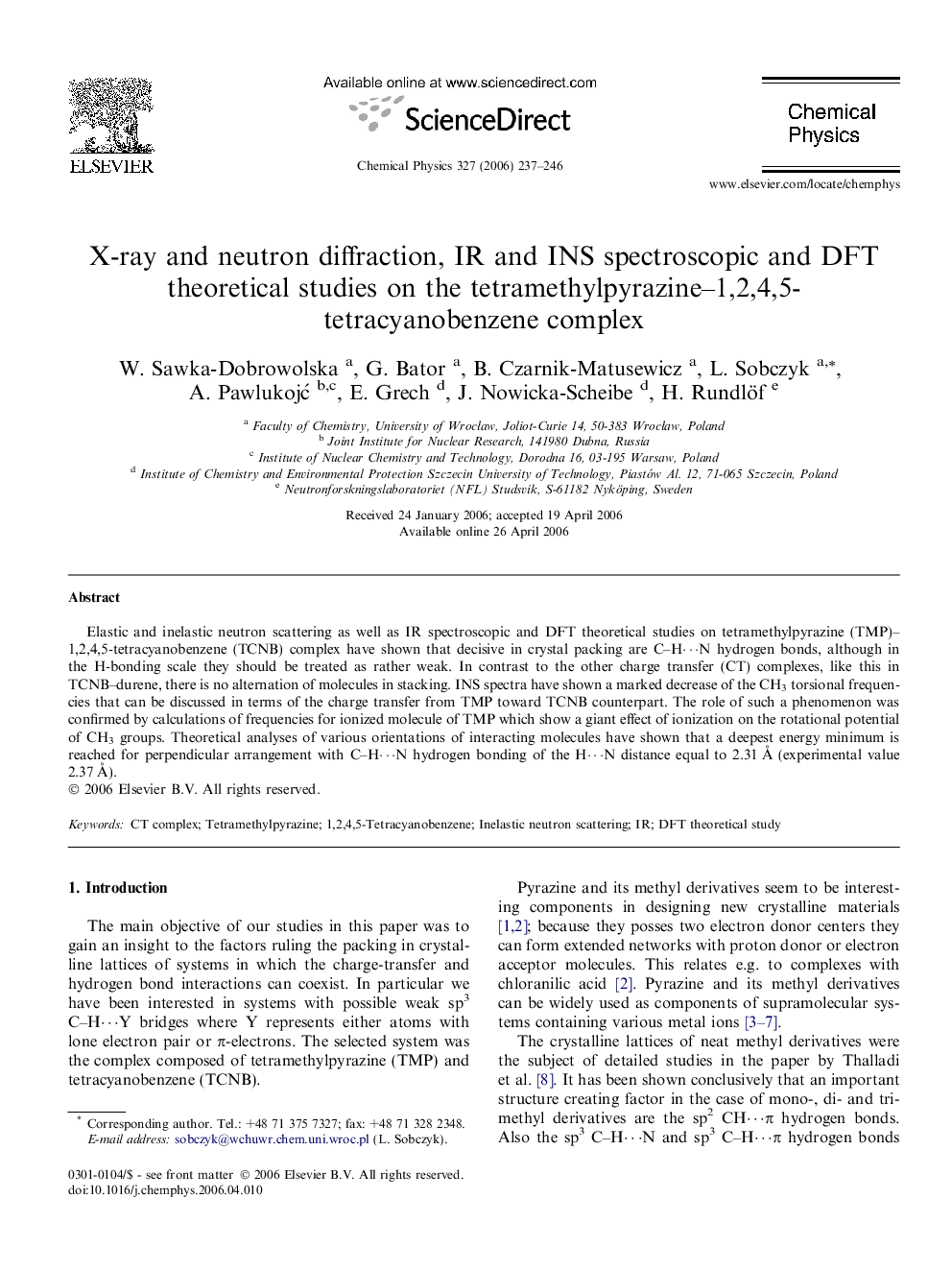| Article ID | Journal | Published Year | Pages | File Type |
|---|---|---|---|---|
| 5376744 | Chemical Physics | 2006 | 10 Pages |
Abstract
Elastic and inelastic neutron scattering as well as IR spectroscopic and DFT theoretical studies on tetramethylpyrazine (TMP)-1,2,4,5-tetracyanobenzene (TCNB) complex have shown that decisive in crystal packing are C-Hâ¯N hydrogen bonds, although in the H-bonding scale they should be treated as rather weak. In contrast to the other charge transfer (CT) complexes, like this in TCNB-durene, there is no alternation of molecules in stacking. INS spectra have shown a marked decrease of the CH3 torsional frequencies that can be discussed in terms of the charge transfer from TMP toward TCNB counterpart. The role of such a phenomenon was confirmed by calculations of frequencies for ionized molecule of TMP which show a giant effect of ionization on the rotational potential of CH3 groups. Theoretical analyses of various orientations of interacting molecules have shown that a deepest energy minimum is reached for perpendicular arrangement with C-Hâ¯N hydrogen bonding of the Hâ¯N distance equal to 2.31 Ã
(experimental value 2.37Â Ã
).
Related Topics
Physical Sciences and Engineering
Chemistry
Physical and Theoretical Chemistry
Authors
W. Sawka-Dobrowolska, G. Bator, B. Czarnik-Matusewicz, L. Sobczyk, A. PawlukojÄ, E. Grech, J. Nowicka-Scheibe, H. Rundlöf,
